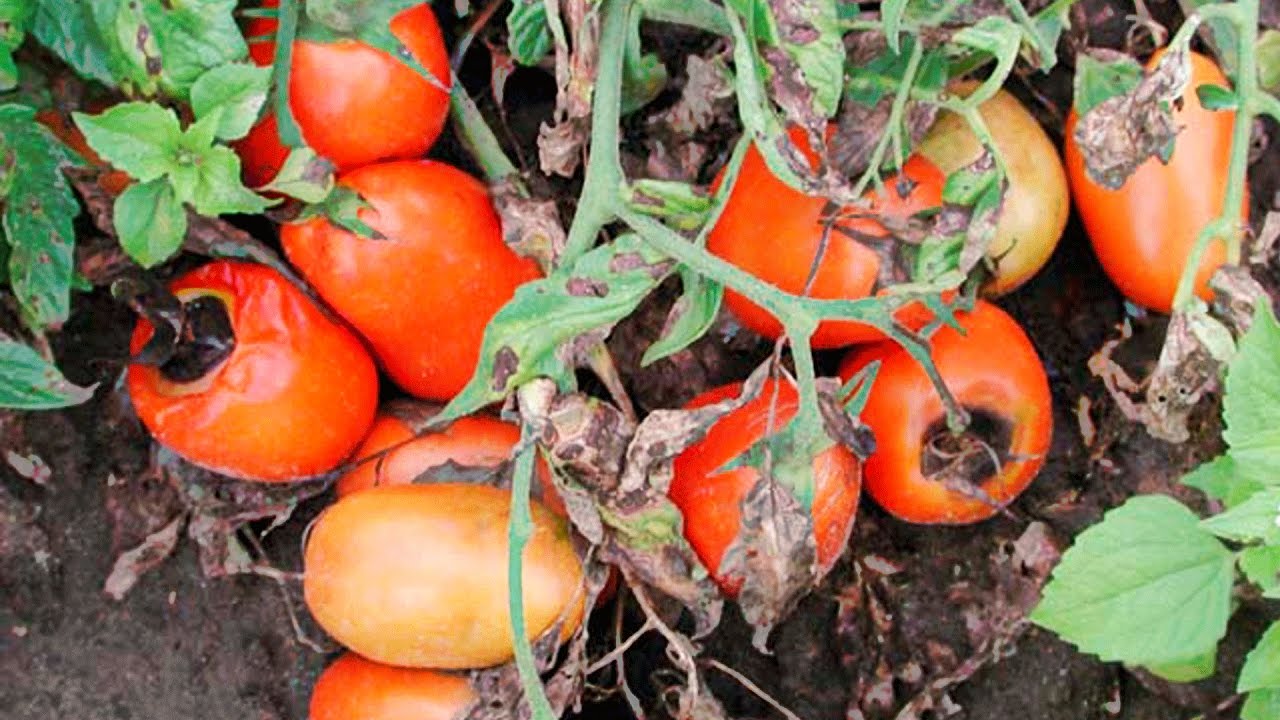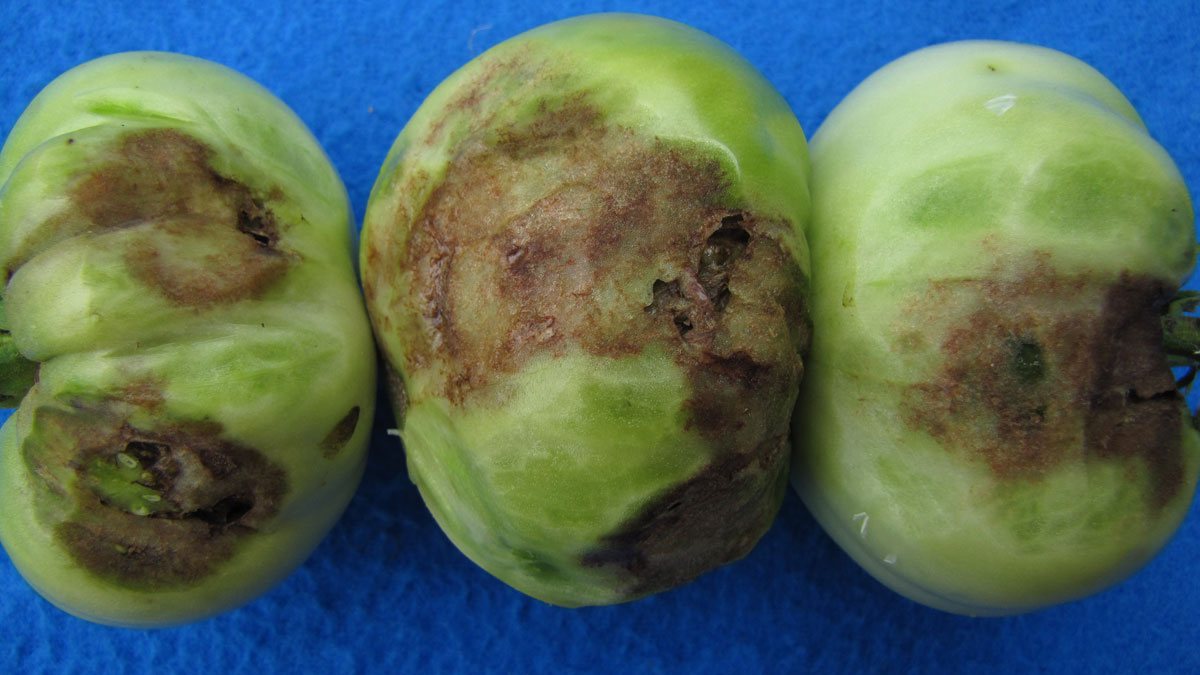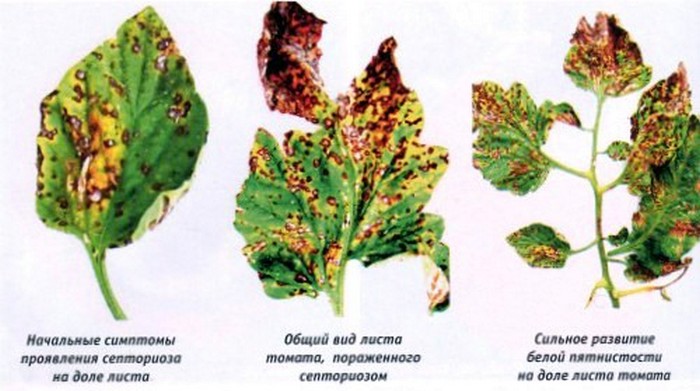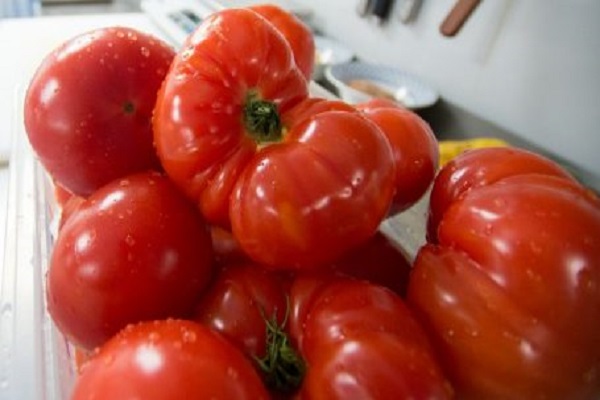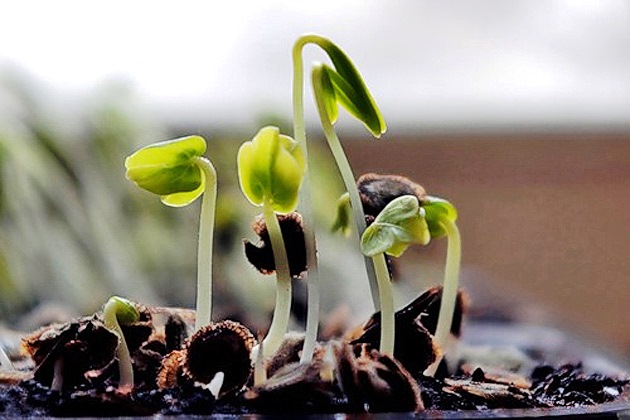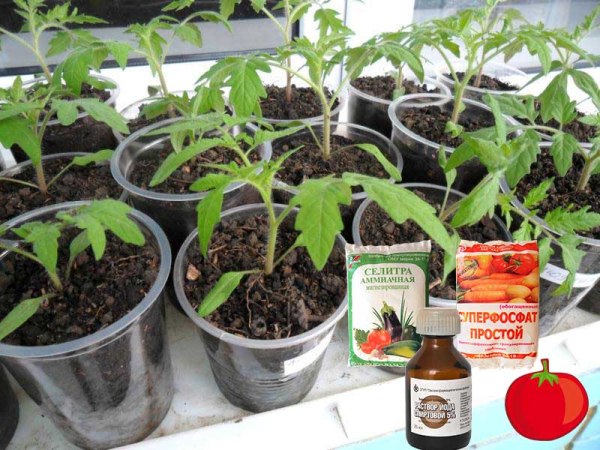Content:
For the successful cultivation of tomatoes, it is necessary to take into account all the needs of the crop; any mistakes in agricultural technology can negatively affect the final result. One of the most common diseases of nightshade is apical rot, which develops both in the greenhouse and in the open field. Therefore, every gardener should know what to do at the first signs of the spread of the disease and what preventive measures to take to avoid it.
Feature of the disease
Top rot of tomatoes appears as brown flat spots on the top of the fruit. Over time, they increase in size, a depression appears at the site of the lesion. The disease is not a fungal disease and is not capable of infecting adjacent bushes, but saprophytic fungi can intensively settle in damaged tissues, as evidenced by the black tint of the spot.
As the disease develops further, the fetal tissue under the affected skin gradually softens and rots. Damaged tomatoes turn red and fall off prematurely.
The main factors contributing to the development of top rot
Lack of moisture against a background of high temperatures. This reason is due to the fact that during the hot period the root system is not able to sufficiently replenish the reserves of fluid in the tissues after intensive evaporation. Therefore, the metabolism in the cells is disrupted, the fruits do not receive the necessary nutrition.
Lack of calcium or excess nitrogen in the soil. In the first case, the deficiency may be in the case of increased acidity of the soil, as a result, the necessary component is not absorbed by the plant, since it is presented in an inaccessible form, or in the absence of timely feeding. In the second case, the excess can be against the background of excessive application of organic fertilizers, which leads to active growth of bushes and a lack of trace elements necessary for the development of fruits.
Soil salinity. This leads to excessive soil irrigation, which promotes crust formation and prevents oxygen from reaching the root system. As a result, in the absence of a normal outflow of water, the soil becomes saline and converts calcium into an inaccessible form for plants.
Horse rot on tomatoes: how to deal
It is worth starting treatment as soon as possible. In the absence of adequate measures, you can lose a third of the crop.
Since the pathological process develops with a lack or excessive watering, as well as with a lack of nutrients, actions should be taken to eliminate the provoking factor.
In the first case, the irrigation regime should be adjusted. This means that moisture should be applied regularly, but without allowing it to stagnate in the soil. To do this, it is necessary to use warm settled water, or better - rainwater. Watering is carried out abundant, under the root of the plant.To prevent the formation of a crust on the soil, it should be periodically loosened to improve oxygen access to the roots.
In the second case, the treatment of top rot on tomatoes consists in carrying out an extraordinary feeding of the plants. You can stop the disease by saturating the plants with the missing components. To do this, you must use calcium nitrate (30 g per 10 l of water) and potassium chloride (25 g per 10 l of water).
To combat top rot in a greenhouse and in the open field, you can also use folk remedies made from improvised means.
- Wood ash. You can fill the potassium and calcium deficiency with an extract based on this component. To do this, pour 200 g of ash into 1 liter of boiling water and leave for 24 hours. After the time has elapsed, bring the total volume of liquid to 10 liters and spray the tomato bushes.
- Trichopolum and brilliant green. This tool will help to neutralize the affected bushes when they are affected by pathogenic fungi and stop the further spread of the disease. To do this, you need to dissolve 10 tablets of the drug and add 10 ml of brilliant green. Spray the bushes, evenly wetting the leaves and shoots.
- Baking soda. To prevent further development of the disease, it is necessary to dissolve 30 g of the component in 1 bucket of water and spray the tomato bushes.
Prevention
Timely prevention will help prevent apical rot. To do this, it is enough to adhere to some recommendations.
- Conduct timely abundant watering of the beds. After that, the soil should be loosened with a flat cutter. To retain moisture in the soil and improve its aeration, you can use mulch from straw or rotted manure.
- Monitor the microclimate in the greenhouse or greenhouse. When growing tomatoes in greenhouses, it is necessary to ventilate the buildings in a timely manner, preventing overheating of the plants. You should also avoid sudden changes in temperature and humidity.
- Liming at high soil acidity. In autumn, after harvesting, lime fertilizer should be scattered, and then it should be sealed to a depth of 20 cm. The consumption rates of the drug depend on the acidity level and the type of soil.
- Timely feed the tomato bushes. For the full development of plants, it is necessary to apply complex fertilizers at least 4 times. When planting, it is also necessary to add a mixture of wood ash, crushed eggshells and dolomite flour, mixing the components with the soil.
Other diseases of tomatoes
Tomatoes are susceptible not only to top rot, so you should pay attention to the main diseases that can make all the efforts of the gardener useless.
- Late blight. The disease is typical for tomatoes grown in the open field. It appears as brown spots that initially appear on the back of the lower leaves. Subsequently, it spreads throughout the bush, affecting shoots and fruits.
- Cladosporium (brown spot). The disease affects the leaves and manifests itself in the form of small dark spots with a gray coating. Subsequently, the affected leaves dry out, and the bushes die.
- Mosaic. A viral disease that cannot be treated. It can be recognized by spots that have a light shade in the middle, and dark along the edge. Subsequently, the damaged leaves completely wrinkle and curl. Over time, the bushes also die.
It is possible to avoid damage to tomato bushes only if the basic rules of care and prevention are observed. Therefore, do not neglect useful recommendations, and then a generous harvest is guaranteed.

